Newborn Baby Milestones to Know
What can you expect your baby to be doing at 1 month, 2 months, and 3 months old? Learn about key newborn developmental markers from smiling to opening and closing their hands.
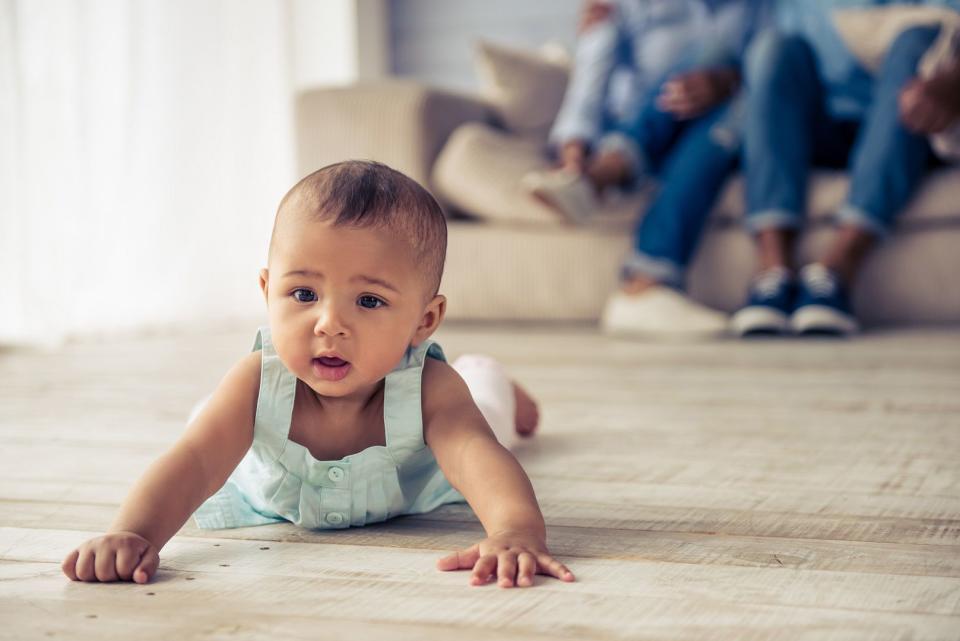
There are a lot of changes happening for your baby between 1 and 3 months. Babies transition quickly from an uneventful newborn stage to a pretty active and aware state by 3 months old. So, when can you expect those baby hands to unfurl or to see that first social smile? Read on to learn what to expect with baby growth and development milestones at 1 month, 2 months, and 3 months.
Watch Your Face
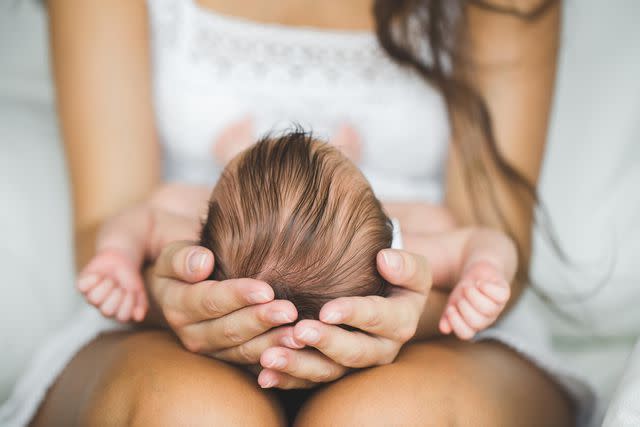
Your baby will start processing your face as a whole instead of just focusing on individual features like eyes. Researchers found that in infants as young as 2 months, the fusiform facial area (FFA)—a section of the brain responsible for facial recognition—is functional.
Consider buying an unbreakable mirror to hang near your baby's playmat or changing table—they'll love seeing their own facial expressions and movements, too!
Related: A Week-by-Week Guide to Your Baby's First Year Milestones
Smile at Your Voice
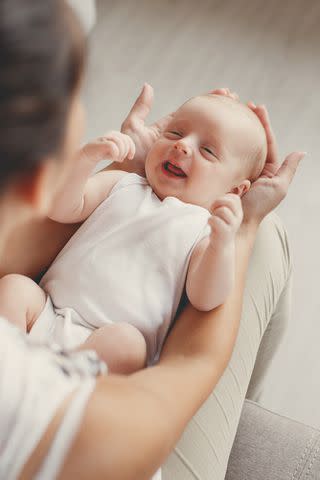
According to the American Academy of Pediatrics (AAP), your baby will be able to recognize your voice, even from a room away, by 1 month old. As a result, you may notice they will smile when they recognize your voice since it reminds them of food, comfort, and warmth.
Speak to them with dramatic baby talk; high-pitched, slow, and exaggerated voices are likely their favorite.
Related: Babies Start to Develop a Sense of Humor as Early as 1 Month
Develop a Social Smile
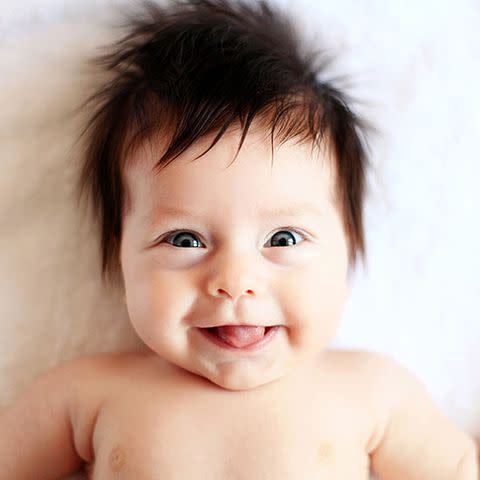
According to the AAP, your baby's first social smile will appear by the end of the second month. So strap in for a view of a genuine gummy grin.
Encourage this adorable 2-month milestone by "smile-talking" with them. Sometimes, they'll aim a big smile at you and even babble to catch your attention. Immediately smile back to encourage this behavior.
Bring Hand to Mouth
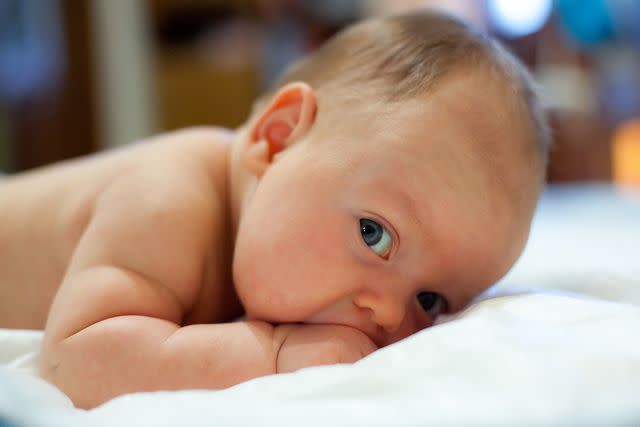
Even if it seems like your baby is slapping themselves, let them try bringing their fingers to their mouth. Baby hands going in their mouth is an important 2-month baby milestone.
They will eventually reach their destination, and they'll be able to suck on their thumb whenever they please.
Related: 5 Reasons Why Babies Chew on Their Hands
Track Moving Objects
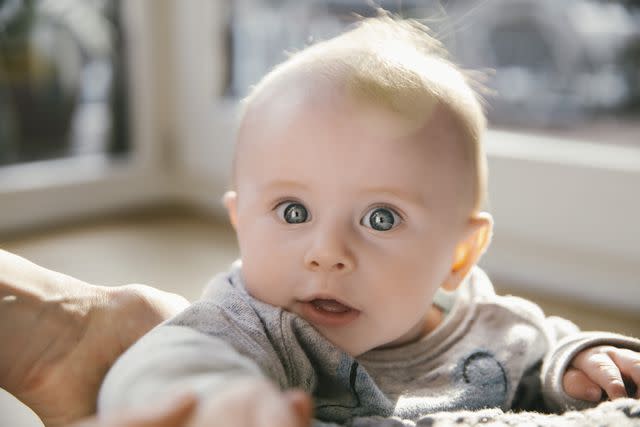
As your baby's vision develops, they should start to follow moving objects with their eyes. According to the American Academy of Ophthalmology, babies' eyes start working together to track objects by around 3 months.
Encourage this 3-month milestone by hanging a bright mobile over their changing table. Set it at a low speed at first, and as your baby gets better at following the objects, gradually increase the speed setting.
Babble
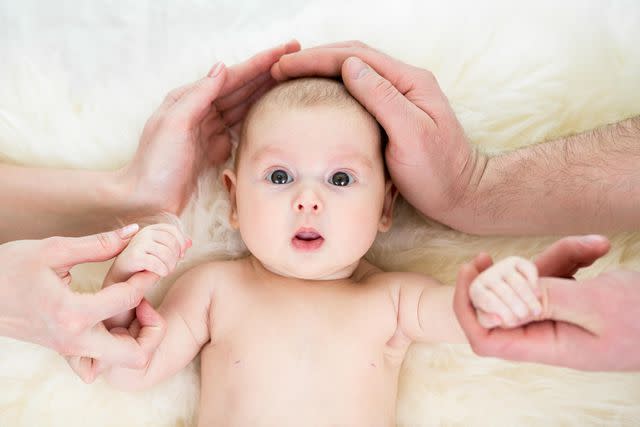
Months before uttering their first word, your baby will babble as a form of verbal communication, and they’ll begin to mimic sounds at around 3 months. According to researchers, early babbling is an important early form of "communication" between babies and caregivers.
Babies learn a lot about inflection and cadence by listening to adult language. To inject even more spoken language into their day, read to your little one often. Babies especially love books with bright pictures and high-contrast patterns that provide visual stimulation.
Related: The Sweetest Developmental Milestones
Raise Head and Chest

In their first few months of life, your baby should begin lifting their head—even if it's just for a few seconds. This action will strengthen their neck muscles. Soon enough, they'll lift their arms and shoulders as well.
Offering your baby daily tummy time will give them plenty of opportunity to hone this skill. Be sure only to use tummy time with your baby when they are awake and always place them on their back for sleeping.
Stretch and Kick While Lying Down
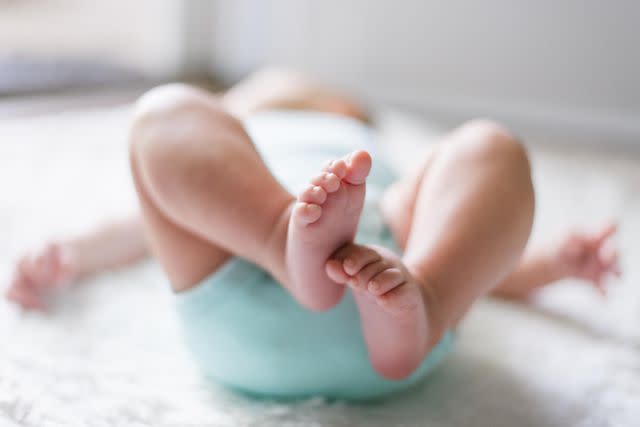
As your baby develops lower body strength, they may stretch and kick their legs while lying down. Stretching out and straightening legs happens closer to 3 months, and their kicks may just be forceful enough to help them roll over soon!
Some babies learn to roll from front to back as a 3-month milestone; make sure you pay close attention so they don't roll into danger or fall off their changing table.
Enjoy Other Babies
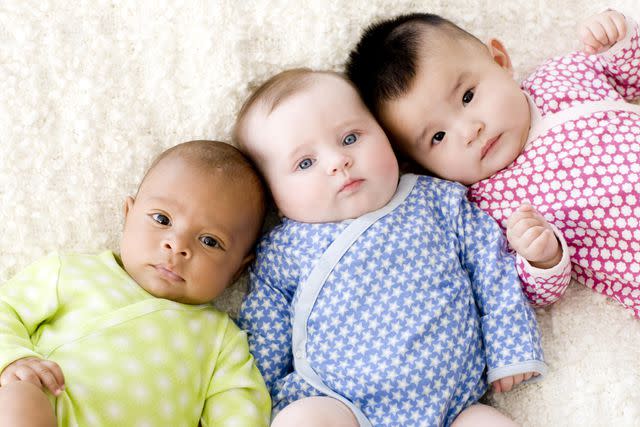
Babies can be social, too! When your child is alert and happy, let friends and family hold them. As they become more comfortable with others, join a playgroup with children near their age.
Also, be prepared for your baby to cry when playtime ends—or when they've had enough stimulation and are ready for some quiet time.
Recognize Objects and People From a Distance
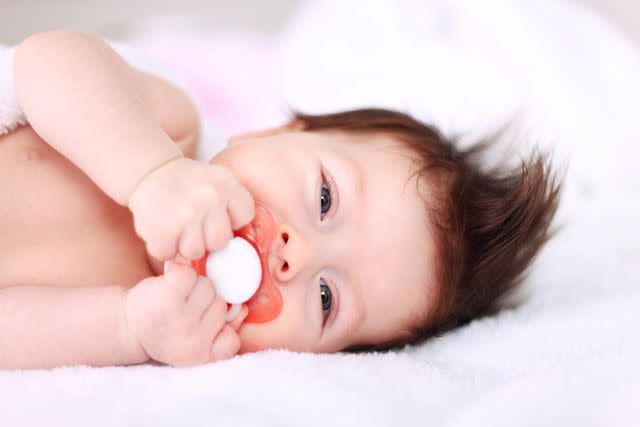
Your baby recognized you up close soon after birth, but as their vision develops, they'll begin recognizing people and objects from afar. While most babies won't start seeing far away things until closer to 4 months, it could happen earlier for some babies.
Either way, you can start to encourage your baby now. When you enter a room, talk to your baby from the doorway. If they can't seem to find you, move a few feet closer. Catching your baby looking out the window is another sign that their distance vision is developing well.
Related: 12 Milestones You Shouldn't Overlook
Become Physically Expressive

Your baby will become more communicative with their face and body language. For example, screaming and crying are signs they are hungry, wet, tired, lonely, or uncomfortable. As you become more in touch with their signals, you might be able to respond to their needs before they are even sure what's wrong.
Open and Shut Their Hands
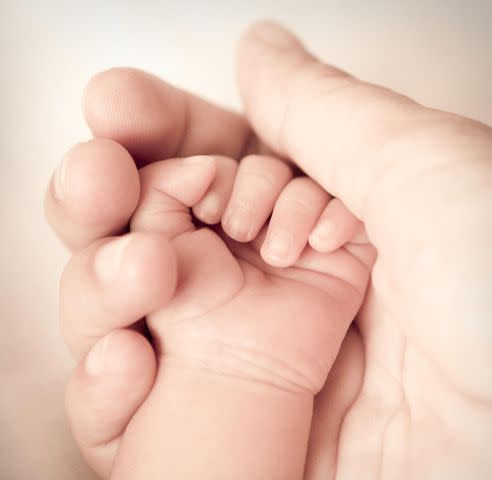
Baby hand movements change as your baby grows. Early on, your newborn often had a pretty balled-up fist, but with time, you'll find their grip loosening up.
An important 3-month-old milestone: Your baby will open and close their hands. Because they might not realize the hands belong to them, they will become fascinated when they accidentally come into view.
Encourage their development by placing a rattle or toy in their open hand and see if they grip it.
Develop Hand-Eye Coordination
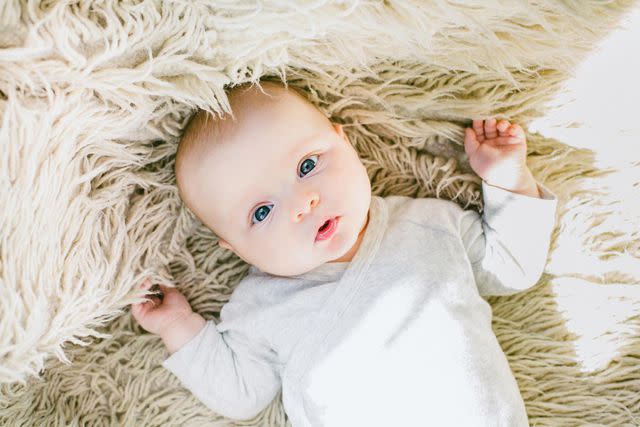
Improving vision and motor skills leads to better hand-eye coordination around 3 months. Baby hand skills develop so that by this time, they have more control of their movements.
To practice, place your baby on your lap and slowly move a soft toy in front of their face. Encourage them to bat at the object with their hand. Even if they don't make contact at first, the practice will help develop their coordination and depth perception.
Turn Their Head Toward Sound
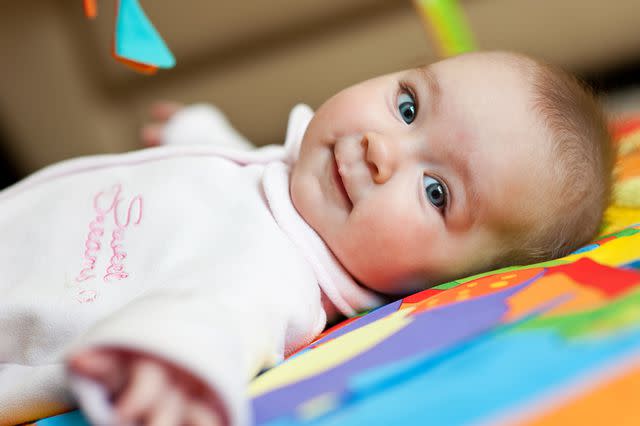
Around 3 months, your little one may begin turning their head toward intriguing sounds. Encourage this cognitive development by introducing your baby to different sounds—sing to them, take them on errands, and go for walks.
Don't be afraid to expose them to crowds or live family-friendly music performances. (But they may still become startled by loud noises, so be prepared to soothe them if the noise is too much.)
Imitate Movements
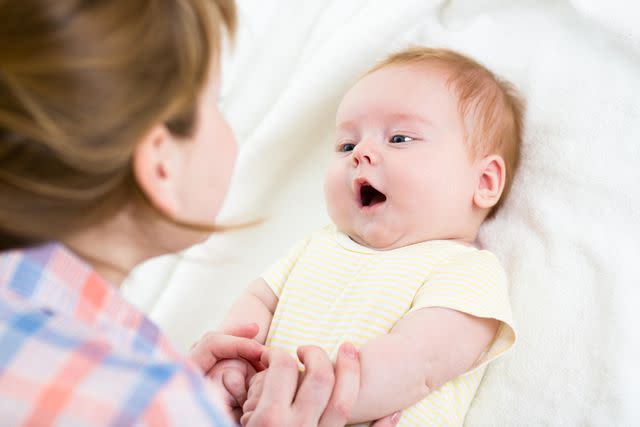
Besides mimicking your sounds, your baby will also begin to imitate your movements and facial expressions. Play along by sitting with your baby facing you on your lap, holding their hands in yours, and singing nursery rhymes with motions.
Push Down on Legs
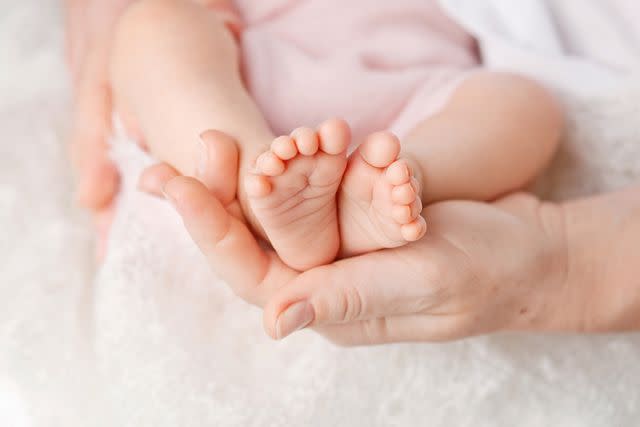
Your baby is slowly developing strength in their legs. Of course, they aren't yet ready to hold up their weight, but it's yet another step in preparing to learn to stand and walk.
Lift them up so their feet rest lightly on a firm surface, then straighten and bend their knees to practice balance. Take care to hold your baby up enough so that you are supporting their body weight while letting them get the feel of "standing."
Grasp and Shake Objects
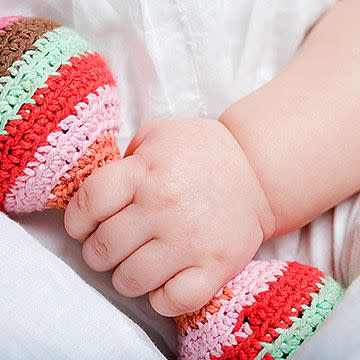
When given toys, your baby might grasp and shake them. They should also be able to reach for objects by around 3 months. Dangle a toy barely out of their reach and see if they swipe at it with excitement.
Related: First Year Baby Milestones by Month
For more Parents news, make sure to sign up for our newsletter!
Read the original article on Parents.

